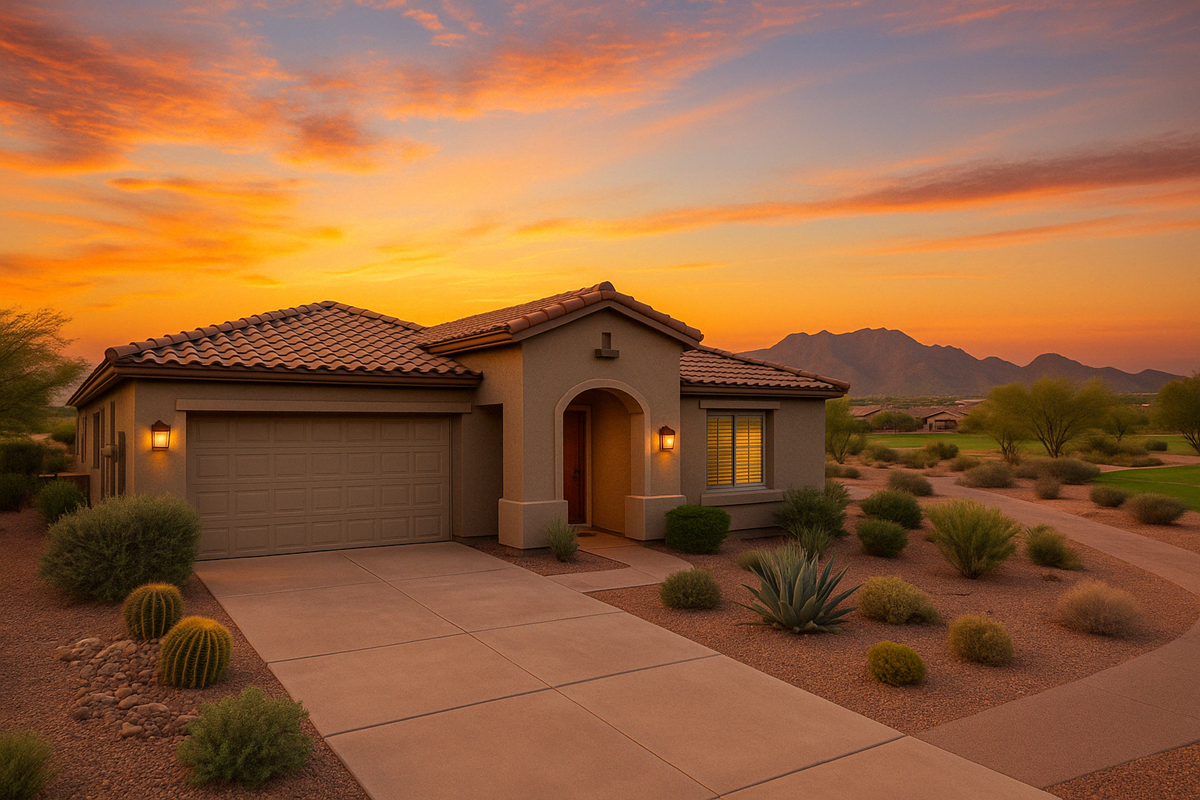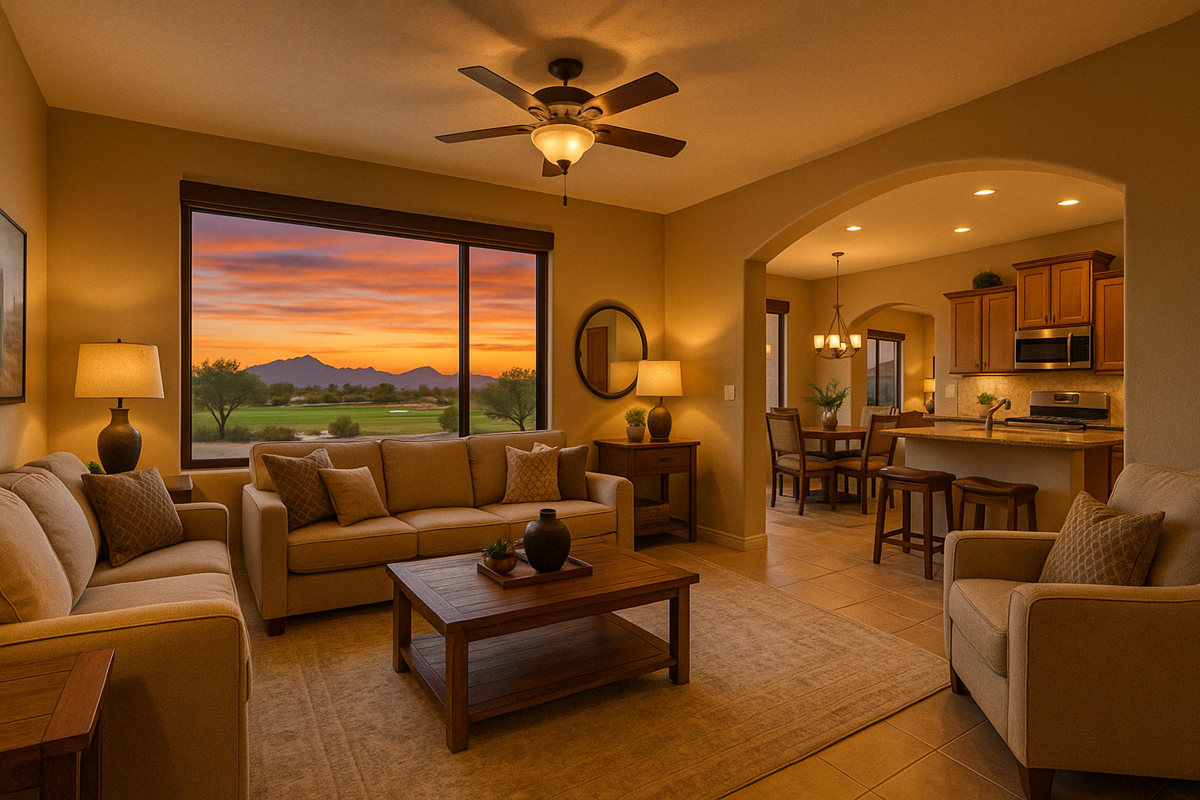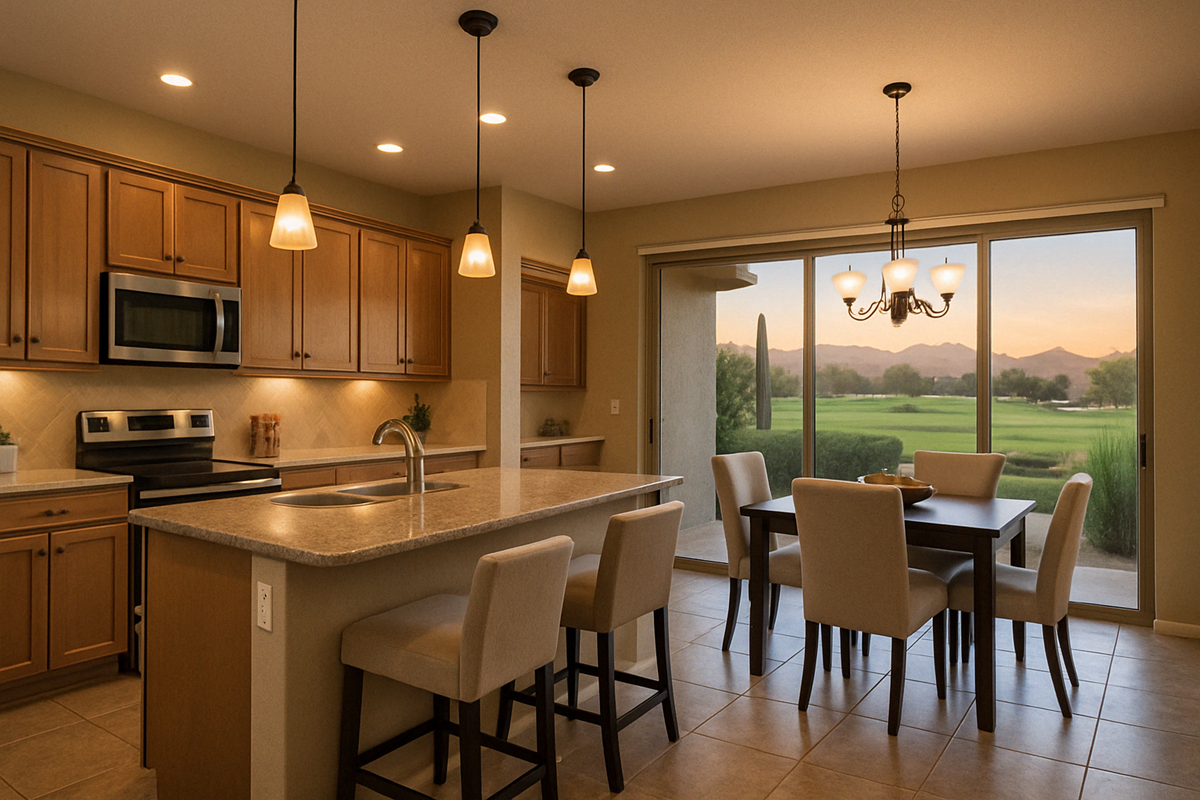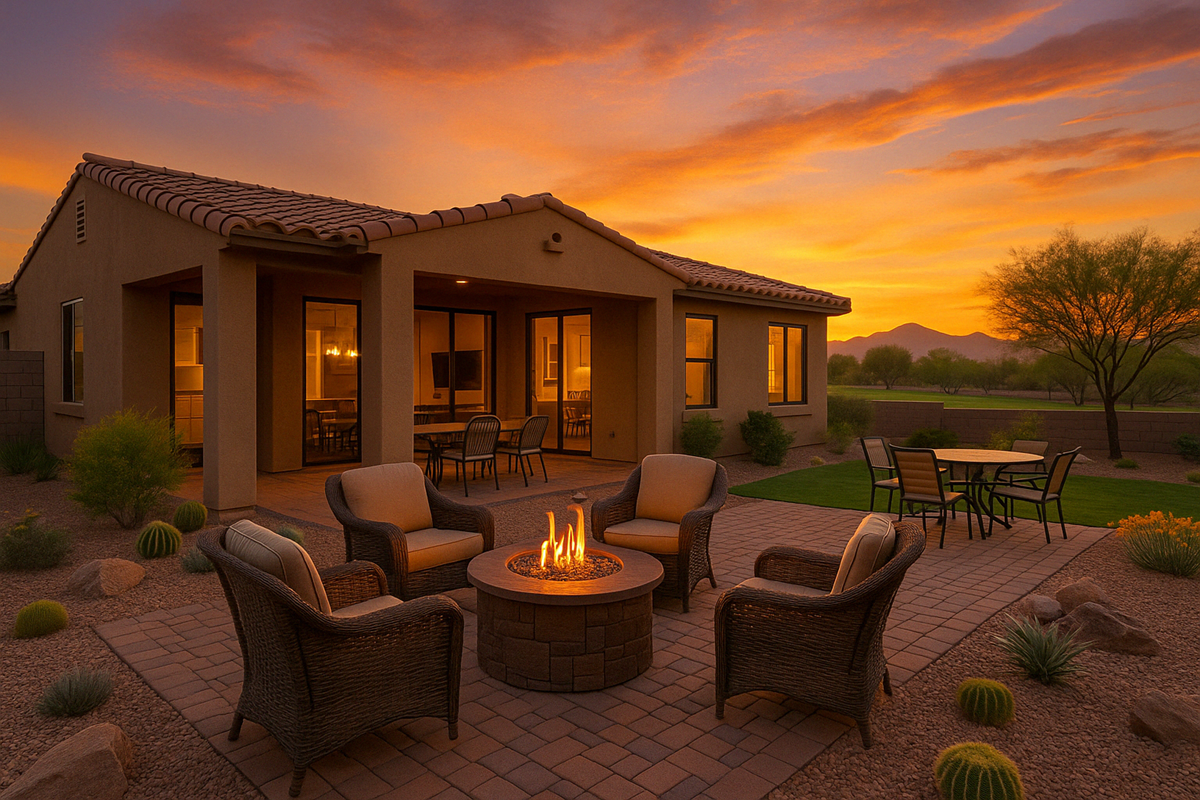What Is A Patio Home And Who Should Consider Living In One?
What Is A Patio Home?
A patio home is a type of house that usually shares at least one wall with another home and often has a small private backyard or patio. People sometimes call these homes garden homes or cluster homes.
You’ll spot them most often in suburban neighborhoods. Builders design them to be low-maintenance and to use space efficiently.
Patio homes attract folks who want a smaller yard and less upkeep than a traditional single-family house. They’re usually single-story or keep the main living spaces on one level.
This layout makes life easier and more convenient for many people. If you’re weighing where to live next, you might wonder if a patio home’s right for you.
Understanding what sets these homes apart can help buyers and renters make smarter choices about their next move.
Definition of a Patio Home
A patio home sits somewhere between a townhouse and a detached house. It’s a single-family dwelling that offers a unique style of living.
These homes appeal to people who want low-maintenance living with a bit of outdoor space and a few shared features. They’re kind of a sweet spot, honestly.
Basic Features
Patio homes are usually smaller than traditional single-family houses. You’ll find them most often in suburban neighborhoods, and they’re all about convenience.
Most have shared walls with at least one neighbor. This setup saves space and can lower building costs.
Even though they share a wall, each patio home typically owns the land right beneath it. The smaller house and lot mean less yard work—sometimes the homeowner’s association even handles it.
That’s a big reason people who want to cut down on chores gravitate toward these homes.
Architecture and Design
Patio homes are often one-story or one-and-a-half stories. The design focuses on easy access and single-level living, which suits a lot of buyers, especially older adults.
You’ll also hear them called garden homes or cluster homes. Common features include open floor plans, attached garages, and small private patios or courtyards.
The homes sit close together to make the most of available land. Still, most offer private outdoor spaces, even if they’re on the small side.
Shared walls are typical, but the layout aims to give each homeowner privacy and comfort. It’s a balancing act, but some neighborhoods pull it off better than others.
Patio Homes vs. Other Housing Types
Townhouses also have shared walls, but they’re usually taller with two or more floors. Townhouses may not always have private patios, while patio homes usually do.
Sometimes people use the term garden homes for patio homes, but garden homes might focus more on outdoor garden areas. Unlike condos, patio homes come with land ownership right beneath the home.
Here’s a comparison table:
| Feature | Patio Home | Townhouse | Detached Home |
|---|---|---|---|
| Shared Walls | Yes (1-2 walls) | Yes (1-2 walls) | No |
| Levels | 1 to 1.5 | 2 or more | 1 or more |
| Outdoor Space | Small patio/yard | Limited or none | Private yard |
| Land Ownership | Yes | Sometimes | Yes |

Key Characteristics
Patio homes make efficient use of land and offer shared features. People living in these homes often find themselves with fewer maintenance tasks and a simpler lifestyle.
Smaller Lots and Shared Spaces
Patio homes usually sit on smaller lots than traditional single-family homes. Most have a small yard or backyard that doesn’t take much effort to keep up.
These homes often share at least one wall with a neighbor, kind of like a townhome or duplex. Shared walls mean you need less land for each unit, which frees up space for more green areas or common outdoor spots in the neighborhood.
Sometimes, homes connect by a fence or landscaping instead of a wall, but there’s almost always some kind of link. Limited private space makes patio homes a good pick for people who want less outdoor maintenance.
Privacy can vary, depending on how the homes are arranged and what separates the yards. Fences or hedges can make a big difference.
Common Areas and Amenities
Many patio home communities offer shared common areas and amenities. You might find green spaces, walking paths, clubhouses, or little parks.
Some neighborhoods add benches, picnic spots, or gardens for everyone to enjoy. Here’s a quick look at typical amenities:
| Amenity | Description |
|---|---|
| Green space | Open grassy areas |
| Walking paths | Paved or gravel trails |
| Clubhouse | Community gathering spot |
| Shared gardens | Areas for plants or flowers |
Shared spaces help build a sense of community. They also make things feel more open, even if your yard’s on the small side. Usually, an association takes care of these areas.
Association and Maintenance Responsibilities
Patio homes often belong to a homeowners association (HOA) or something similar. The association usually handles maintenance on common areas, landscaping for front yards, and sometimes exterior repairs.
Residents pay monthly or yearly fees for these services. That means less responsibility—no mowing the lawn, no trimming bushes, and no stress over shared green space.
The association often sets rules about what you can plant or change in your yard. This keeps the community looking tidy and consistent. If you’d rather not spend weekends on yard work, this kind of setup is pretty appealing.

Patio Homes Compared to Other Property Types
Patio homes stand apart from other housing types like townhouses, condos, single-family homes, and apartments. Each type offers a different lifestyle, set of features, and maintenance needs.
Differences from Townhouses and Townhomes
A patio home usually shares one wall with a neighbor, similar to a townhouse. The big difference? Patio homes are usually single story, while townhouses have two or more levels.
That single-level style appeals to people who want to avoid stairs. Townhouses are often built in rows of attached units, while patio homes might come in clusters and sometimes offer more privacy.
Patio homes usually have a larger outside space than townhouses, but not as much as a detached house. Townhouses may only have a small deck or patio, while patio homes can have a fenced yard or garden.
Maintenance in patio home communities is often provided for the exterior and landscaping. Townhouse residents might have to handle some or all yard work, depending on the rules.
Patio Homes vs. Condominiums and Condos
Patio homes and condos both have shared walls and a community vibe. But ownership works differently. With a patio home, you own the structure and the small yard; with most condos, you just own the inside space.
In a condo, everyone jointly owns the building’s exterior, yard, and amenities. Patio home owners are usually responsible for their own unit and yard, though a homeowner’s association (HOA) might still cover some maintenance or landscaping.
Patio Home vs. Condo Quick Facts:
| Feature | Patio Home | Condominium |
|---|---|---|
| Ownership | Unit & small yard | Interior only |
| Common walls | At least one | At least one |
| Outdoor Space | Private patio/yard | Shared or limited |
| HOA coverage | Varies | Broad |
Condos are often in multi-story buildings, while patio homes are usually one story and grouped side by side.
Contrast with Single-Family Homes
Single-family homes are detached houses on their own lots with private yards. Patio homes are different because they attach to another unit by at least one wall and sit closer together, so you get less land per home.
Patio homes are almost always smaller, both inside and out. They focus on lower maintenance, while single-family homes may have big yards and more work to do.
With a single-family home, the owner handles all maintenance. A patio home often includes some services in the HOA fee, like lawn care or snow removal.
People who want privacy or more space usually go for single-family homes. Those who want easy care and some outdoor area might lean toward a patio home.
Patio Homes Compared to Apartments
Apartments are rentals, so residents don’t own the home or land. Patio homes are owned properties and sometimes come with a yard or outdoor space.
Patio homes offer more privacy than apartments—there are fewer shared walls and no one living above or below. Apartments, especially in big buildings, cram several residences under one roof.
It’s rare for apartments to have private yards or patios. Patio homes give you those perks. If you like to decorate or use your outdoor space, patio homes make that possible, while apartment renters have less control.
Who Should Consider a Patio Home?
Patio homes suit several types of homebuyers, thanks to their design, smaller size, and shared features. They usually offer lower maintenance and are part of planned communities, which often include shared amenities.
Empty-Nesters and Retirees
Empty-nesters often want less space and fewer chores after their kids move out. Patio homes are usually single-story or just one and a half stories, so stairs are limited and daily life gets easier as you age.
Many patio homes use low-maintenance materials, and landscaping is often included in HOA fees. That means less yard work or repairs, so residents can spend time on hobbies or travel.
Common areas, walking paths, and clubhouses are often nearby, making it easy to meet neighbors. Here are a few perks for empty-nesters and retirees:
- Little or no yard work
- Fewer repairs needed
- One-level living
- Community amenities like pools and walking trails
Singles and Couples
Singles and couples who want a smaller, manageable home often go for patio homes. The simple layouts and smaller lots just make life easier.
Most patio homes are attached, so you get a sense of community if you’re living alone or as a couple. The setup feels social without being overwhelming.
The homes usually sit in neighborhoods with shared green spaces or patios. That kind of layout makes it easier to meet people and bump into neighbors.
Shared walls can help lower energy bills, too. These homes tend to be efficient, which is always a plus.
Key advantages include:
- Lower utility costs
- Little upkeep
- Privacy without total isolation
- Chance to join community events
If you’re a single person or a couple without kids, patio homes offer comfort and convenience—no need to fuss with a big, traditional house.
First-Time Homebuyers
Patio homes can be a great pick for first-time homebuyers. They usually cost less than single-family houses because of their smaller size and shared walls.
You get the perks of homeownership while keeping your budget in check. That’s a big deal for a lot of folks starting out.
Most patio homes sit inside planned developments. Buyers often get access to clubhouses, fitness centers, or pools through their HOA fees.
Move-in ready options are pretty common, so the process feels less daunting if you’re new to real estate.
Why first-time buyers may look at patio homes:
- Friendly price points
- Shared community features
- Simpler maintenance responsibilities
- Modern finishes and newer builds

Pros and Cons
Patio homes keep things simple. That’s the point. You get a smaller space, less yard work, and usually an HOA that handles the outdoor upkeep. It’s a solid setup if you’re after a no-fuss lifestyle with a touch of privacy. These homes tend to cost less than detached single-family houses, and the layouts are practical—often single level, with just enough outdoor room to breathe.
Another big plus? Community. Homes sit closer together, which encourages casual neighbor chats and shared use of parks, clubhouses, or walking trails. And for buyers wanting lower utility bills or easier living as they age, this style checks a lot of boxes.
Still, it’s not for everyone. Shared walls can mean more noise. Yards are smaller. And some buyers find the HOA rules a bit tight—especially when it comes to paint colors or planting what you want. Monthly fees add up, too. Privacy’s limited, and bigger families may run out of room fast.
In short: Great for people who want less work. Not so great for folks who want more space or control.
Benefits of Living in a Patio Home
Patio homes are usually smaller and have less yard space than traditional houses. Less grass means less time and money spent on lawn care and outdoor chores.
Most patio homes belong to a homeowners association (HOA), so outside work like landscaping and repairs gets rolled into your monthly fees. That’s handy if you’re not keen on home upkeep.
Affordability is another plus. Patio homes usually cost less than single-family homes since they use less land and fewer materials.
Many patio home neighborhoods feel neighborly because homes are close together. People tend to interact more, and some communities offer common spaces for hanging out.
Key benefits include:
| Good | Description |
|---|---|
| Less maintenance | HOA covers landscaping and repairs |
| Lower price | Smaller size usually means a reduced purchase price |
| Community feel | Close proximity helps neighbors build relationships |
Common Concerns
One of the most common concerns with patio homes is privacy. Since many units share at least one wall, noise from neighbors can be a thing.
The close layout means less space between homes. If you love big yards or private outdoor areas, you might feel a bit boxed in.
HOA rules play a big role in patio home communities. Owners often have limited choices for things like exterior decorations or landscaping changes.
HOA fees also show up every month, so that’s another expense to budget for. Some people worry about the smaller square footage, especially if they want extra storage or space for guests.
This setup may not work for bigger families who need more room.
Main concerns include:
| Concern | Description |
|---|---|
| Privacy issues | Shared walls and small yards limit privacy |
| HOA restrictions | Rules about paint color and exterior changes |
| Less space | Smaller home size and outdoor area |
| Monthly fees | Required HOA payments add to the budget |
Patio Homes in the Real Estate Market
Patio homes give buyers unique options if they want lower maintenance and smaller yards. These homes share some buying, selling, and financing steps with other property types, but there are definite differences in the real estate process and market trends.
Buying and Selling Process
Most patio homes are part of a homeowners association (HOA), so buyers need to review all HOA rules and fees before making an offer. HOAs usually handle exterior maintenance, so it’s good to know what’s covered.
When you’re house hunting, patio homes might show up next to townhomes or condos in real estate searches. Double-check the details to confirm the type of home.
Patio homes are often attached or semi-attached and usually single story. Sellers like to point out features like low yard upkeep, open floor plans, and access to community amenities.
In areas where patio homes are rare, buyers sometimes compete for them—especially if they want single-level living or smaller lots.
Financing and Mortgages
Most patio homes qualify for standard mortgage loans like FHA, VA, or conventional options. Lenders might review the HOA’s rules, reserves, and insurance coverage.
It’s smart for buyers to get pre-approved so they know what they can afford and which loan programs work for them. The appraisal process may consider things like shared walls, community amenities, and lot size.
Lenders sometimes ask extra questions about the HOA to make sure the property qualifies for a loan. Interest rates and down payment requirements usually line up with other single-family homes or townhouses.
Some lenders offer programs with lower down payments, especially for first-time buyers.
Market Trends and Availability
Patio homes show up most often in suburban areas and places popular with retirees or people who want single-level living. Many are built in planned communities that focus on lifestyle features instead of big yards.
In some markets, there just aren’t as many patio homes as other types of housing. That can mean faster sales and higher prices, especially if demand stays strong among older adults or those who want less maintenance.
New patio home developments often sell out fast, and resale homes can attract people looking to downsize. Local real estate agents can help buyers find homes that fit their needs. Here’s a quick summary:
| Market Factor | Patio Home | Townhouse | Condo |
|---|---|---|---|
| Level of Maintenance | Low | Moderate | Low |
| Outdoor Space | Small Yard | Rarely | None |
| Story Count | Usually 1 | 2+ | 1 |
| Attached/Detached | Attached/Semi | Attached | Attached |

Lifestyle and Community Considerations
Patio homes usually sit in close-knit neighborhoods with shared amenities. Associations manage these communities, set rules, and handle maintenance, which makes daily life a bit more convenient for residents.
Community Features
Patio home communities often feature shared spaces and amenities designed for comfort and convenience. You’ll find things like landscaped walking trails, clubhouses, ponds, and fitness centers.
Residents often enjoy swimming pools, tennis courts, and gathering areas for social events. These shared amenities really do encourage a friendly, neighborly vibe.
Since many of these homes are built in clusters or connected by shared walls, neighbors live close together. That setup makes it easier to run into people and build relationships.
Some communities are designed for folks who want a low-maintenance lifestyle. The association usually handles lawn care, snow removal, and exterior upkeep, so homeowners get more free time.
This kind of living appeals to people who want a balance between privacy and social interaction. Not everyone wants to spend weekends mowing the lawn, right?
Homeowner Association Conditions
Most patio home neighborhoods have a Homeowner Association (HOA) that manages conditions and community rules. They collect fees from each resident to cover things like landscaping, exterior repairs, and shared facility upkeep.
The HOA usually sets guidelines for exterior appearance—paint colors, yard decorations, fence height, and so on. This helps keep a pretty uniform look across the neighborhood.
If you want to change something about your home, you might need to get approval first. It can feel a bit strict, but some folks appreciate the consistency.
Associations outline who’s responsible for what in clear documents. Here’s a table that breaks down common HOA responsibilities:
| Responsibility | Who Handles It |
|---|---|
| Lawn maintenance | Association |
| Exterior repairs | Association |
| Interior maintenance | Homeowner |
| Roof replacement | Varies (check HOA) |
| Snow removal | Association |
Patio Home Living With Pets, Guests, & Storage in Mind
These types of properties are a great option for first-time homebuyers, offering a unique blend of convenience and comfort. These single level residences often share walls with neighbors, making them similar to condos or townhomes but with more outdoor space. In areas like Scottsdale patio communities, home ownership means enjoying a private patio while benefiting from exterior maintenance and landscaping taken care of by the association. This setup allows pet owners to enjoy their furry friends without the hassle of extensive yard work.
When searching to find patio homes, buyers will notice that they are often more affordable than traditional homes in the real estate market without sacrificing quality. They also provide ample storage options to accommodate guests and personal belongings, ensuring that every visit is comfortable. Whether you prefer a townhome and patio home combination or a more traditional layout, patio homes include the versatility that modern living demands.
How Patio Homes Fit Into Downsizing Plans
The term “patio home” refers to a style of housing that offers a unique blend of standalone and attached home features, making it an appealing choice for patio homeowners looking to downsize. With the nature of patio homes emphasizing ease and accessibility, these residences often come with association fees that cover maintenance and landscaping, alleviating concerns for those with mobility issues. Many home buyers searching for patio homes enjoy the space and privacy they provide, which is often complemented by quaint courtyard homes and carriage homes in the vicinity. This is particularly attractive for small families or first-time homeowners wanting to buy a home without the complexities of a traditional property.
As the real estate market evolves, patio home living has become an increasingly popular option for those wishing to remain close to amenities like golf courses while downsizing. Unlike a townhome or condo, a patio home allows for a greater sense of independence, often featuring a private outdoor area that separates it from a neighboring home. Homeowners appreciate how a patio home doesn’t require extensive upkeep, making it a favorable choice for those transitioning from larger spaces. As buyers search for patio homes, they find a lifestyle that balances comfort, community, and convenience.
Frequently Asked Questions
What Is A Patio Home?
A type of residential property that typically features a small yard or outdoor space, often designed for low-maintenance living. These homes may be attached or detached, and they often have a single-story layout, though some can have one and a half stories. The term “patio home” is often used interchangeably with garden home or courtyard homes, and they are popular for their efficient use of space and ease of maintenance.
How Does A Patio Home Differ From A Single-Family Home?
The primary difference lies in the design and layout. While a single-family home is typically a standalone structure on its own lot, a patio home may share walls with neighboring homes or be part of a patio home community. This design often allows for a smaller footprint, making them more affordable and easier to maintain.
Who Would Benefit From Living In A Patio Home?
First-time homeowners, retirees looking to downsize, and busy professionals seeking low-maintenance living are all ideal candidates. The affordability of patio homes makes them attractive to those who want to own a home without the extensive upkeep of a larger property.
What Are The Benefits Of Patio Home Living?
There are several advantages, including low-maintenance lifestyles, which allow homeowners to spend more time enjoying their outdoor space and less time on maintenance and landscaping. Additionally, many patio home communities feature shared common areas and amenities, promoting a sense of community among residents.
What Is The Nature Of Patio Homes?
The nature of patio homes is characterized by their efficient use of space and design. These homes often include private outdoor areas and are designed for easy access to common areas. Many patio homeowners appreciate the balance between indoor and outdoor spaces.


















